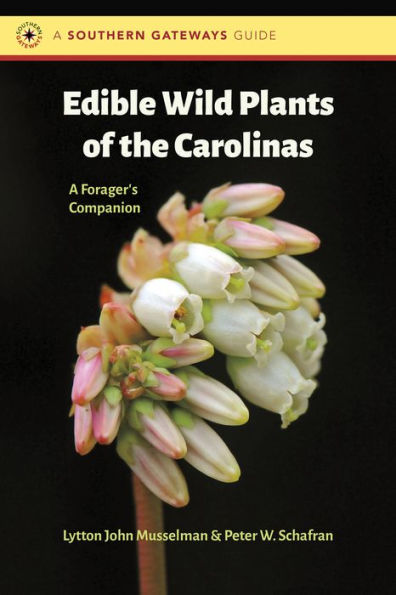Foraging edible plants was once limited to specialists, survivalists, and herbalists, but it’s become increasingly mainstream. Influenced by the popularity of the locavore movement, many restaurants feature foraged plants on their menus, and a wide variety of local foraged plants are sold at farmers markets across the country.
With Edible Wild Plants of the Carolinas, Lytton John Musselman and Peter W. Schafran offer a full-color guide for the everyday forager, featuring:
- Profiles of more than 100 edible plants, organized broadly by food type, including seeds, fruits, grains, and shoots
- Details about taste and texture, harvesting tips, and preparation instructions
- Full-color photos that make it easy to identify edible plants
Edible Wild Plants of the Carolinas is designed to help anyone enjoy the many wild plants found in the biodiverse Carolinas.
1139109723
With Edible Wild Plants of the Carolinas, Lytton John Musselman and Peter W. Schafran offer a full-color guide for the everyday forager, featuring:
- Profiles of more than 100 edible plants, organized broadly by food type, including seeds, fruits, grains, and shoots
- Details about taste and texture, harvesting tips, and preparation instructions
- Full-color photos that make it easy to identify edible plants
Edible Wild Plants of the Carolinas is designed to help anyone enjoy the many wild plants found in the biodiverse Carolinas.
Edible Wild Plants of the Carolinas: A Forager's Companion
Foraging edible plants was once limited to specialists, survivalists, and herbalists, but it’s become increasingly mainstream. Influenced by the popularity of the locavore movement, many restaurants feature foraged plants on their menus, and a wide variety of local foraged plants are sold at farmers markets across the country.
With Edible Wild Plants of the Carolinas, Lytton John Musselman and Peter W. Schafran offer a full-color guide for the everyday forager, featuring:
- Profiles of more than 100 edible plants, organized broadly by food type, including seeds, fruits, grains, and shoots
- Details about taste and texture, harvesting tips, and preparation instructions
- Full-color photos that make it easy to identify edible plants
Edible Wild Plants of the Carolinas is designed to help anyone enjoy the many wild plants found in the biodiverse Carolinas.
With Edible Wild Plants of the Carolinas, Lytton John Musselman and Peter W. Schafran offer a full-color guide for the everyday forager, featuring:
- Profiles of more than 100 edible plants, organized broadly by food type, including seeds, fruits, grains, and shoots
- Details about taste and texture, harvesting tips, and preparation instructions
- Full-color photos that make it easy to identify edible plants
Edible Wild Plants of the Carolinas is designed to help anyone enjoy the many wild plants found in the biodiverse Carolinas.
16.99
In Stock
5
1

Edible Wild Plants of the Carolinas: A Forager's Companion
144
Edible Wild Plants of the Carolinas: A Forager's Companion
144Related collections and offers
16.99
In Stock

Product Details
| ISBN-13: | 9781469664972 |
|---|---|
| Publisher: | The University of North Carolina Press |
| Publication date: | 10/12/2021 |
| Series: | Southern Gateways Guides |
| Sold by: | Barnes & Noble |
| Format: | eBook |
| Pages: | 144 |
| File size: | 27 MB |
| Note: | This product may take a few minutes to download. |
About the Author
What People are Saying About This
From the B&N Reads Blog
